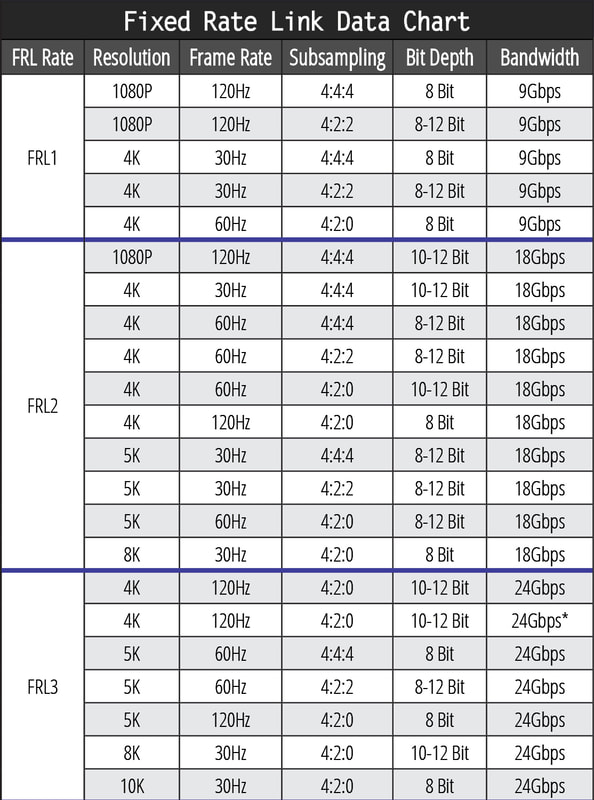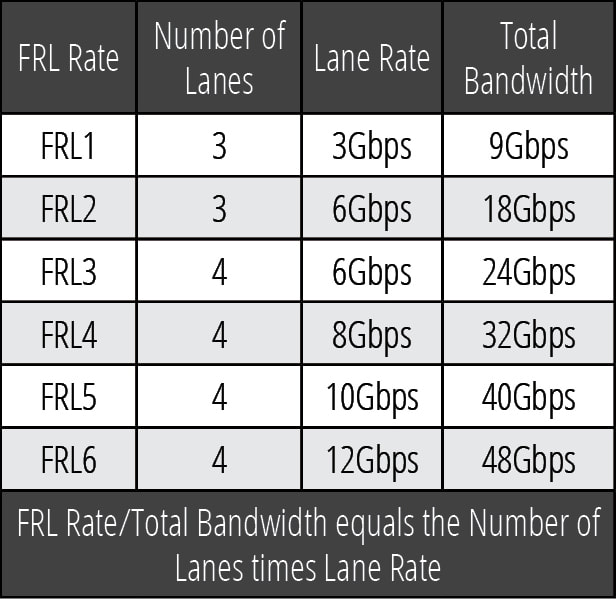FRL Data Rate Chart
Understanding FRL (Fixed Rate Link)HDMI 2.1 features some new tricks that allow for the better transport of audio-video signals. One of those tricks is FRL or Fixed Rate Link.
FRL differs from the traditional TMDS signaling of previous HDMI versions (HDMI 2.0 and below). It defines signals by the number of lanes and their combined lane rates and has six possible FRL rates consisting of three to four lanes with a lane rate of 3-12Gbps (see table below). Notably, FRL will always attempt to maximize throughput based on the sink capabilities and, ultimately, the link (cable) maximum capacity using link training and each lane maintains a fixed data rate rather than the previous HDMI versions varying data rate TMDS Channels. Also, FRL embeds the TMDS Clock Channel directly into the HDMI Signal, allowing for features such as Variable Refresh Rate, Dynamic HDR, and more. However, HDMI 2.1 is not entirely different because FRL is backward compatible with lower data rates and will fall back to traditional TMDS if FRL is not supported. When in fall back, TMDS is capable of all signals up to FRL2. Although a device may support a particular FRL rate, it might not support all possible video signals. |



